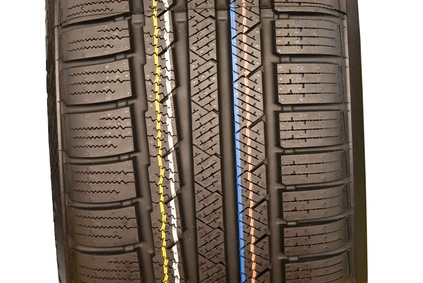
Tire wear on your Chevy TrailBlazer can be caused by several different issues. It is often assumed that tires do not need any maintenance, but they are like any other part on a vehicle: they will wear out quickly if not maintained. Some of these maintenance issues can be done by yourself while others should be performed by a trained mechanic.
Having tire pressure that is too high or too low is probably the leading cause of excessive tire wear on a Chevy TrailBlazer. Because it's a larger vehicle, you need to follow the exact pressure recommendations located on the plaque inside the driver's door jamb. The recommended pressure is a complex formula where the weight of the vehicle, flex of the tire sidewall and size of the tire are all taken into account. Too much pressure makes the center bulge out, and you wear out the middle of the tire quickly. Too little pressure makes the center sink inward, causing the outer edges to wear out quickly.
Every vehicle has three alignment adjustments; camber, caster and toe. All three adjustments have a specified range determined by the manufacturer. It is recommended to have the alignment checked on your TrailBlazer every 6,000 miles. If you drive over a lot of speed bumps or potholes, you will probably have to have it adjusted every 6,000 miles as well. The front end and suspension of your TrailBlazer take a lot of sharp up and down motions, so eventually the adjustments will go out of the manufacturer's specifications. Many people think that if the alignment is out, the vehicle will pull. That is not true: if the camber is out equally on both sides, it will still track straight. Camber causes the most wear as well because it means the tire is on its outer or inner edge. Caster is typically non-adjustable without strut replacement and rarely causes tire wear. Toe adjustment that is out of specification causes feathering of the tread as it pulls the tire against the vehicle's motion.
Rotating the tires every 6,000 miles is a very important part of maintaining them. Because the rear end is generally more "fixed" than the front end, those in the back wear out flatter. However, they have a tendency to get a choppiness to them if they are left on the rear too long. The best way to avoid this is to move the tires from front to back every 6,000 miles.
On heavier sport utility vehicles especially, the suspension will wear out. Ball joints, tie rod ends, bushings, shocks and struts all cause tire wear. Shocks are very often overlooked. Since shocks wear out slowly, you never really notice that they are going bad until you have them replaced. Shocks cause tire wear because the older they are, the less resistant they are to allowing the tire to leave the ground. When this happens, the tire will actually bounce, causing severe choppiness to the tire.